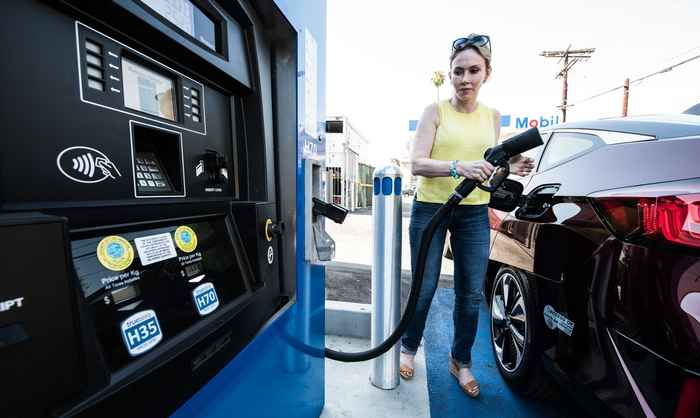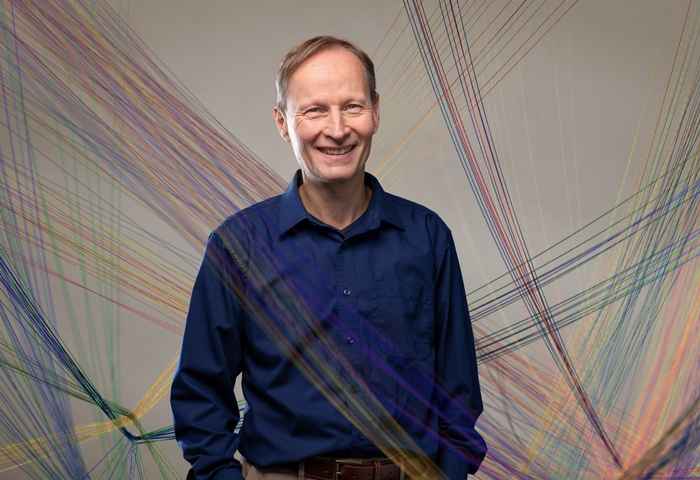The ‘hydrogen economy’ may be relatively small, but critical
13 February 2025

In the public and scientific debate, the ‘hydrogen economy’ is at times presented as the ultimate solution to mitigating climate change. According to Prof. Van der Zwaan, this notion is both over-sold and under-appreciated. ‘Our research shows that it will most likely be renewable-based electrification that offers the most cost-efficient decarbonization route for most sectors of the economy. We substantiate and quantify, for the first time, the role of direct hydrogen use as an alternative clean fuel. With just 6 to 10%, this projected share is relatively small. However, we do see a critical role for hydrogen in specific decarbonization pathways, in particular for heavy industry and transportation.”
Modelling challenges
The research led by Van der Zwaan is part of a multi-institution collaborative research project led by the KTH Royal Institute of Technology in Stockholm, Sweden. Called the European Climate and Energy Modelling Forum (ECEMF), it aims to establish a coherent and unified evidence base for policy development in reducing CO2 emissions. Central to the project is the comparison of model outcomes and strengthening the European modelling community. For the research now presented in Nature Communications, eight well-established energy system models were combined to assess a set of pathways towards realizing net-zero CO2 emissions in Europe in the first half of the 21st century.

The models combine technical and economic aspects to arrive at feasible projections for technology implementation. According to Van der Zwaan, one of the challenges concerning the energy transition is so-called ‘sector coupling’. “We used to model economic sectors more or less independently”, he says, “but now we see an interdependence developing between previously very different sectors. Take, for example, the residential sector - buildings, apartments, houses - and the transportation sector. With the huge amount of solar panels on rooftops, and people charging their electric cars at home, those sectors are becoming more and more interconnected. Similarly, the electricity sector and industry will become increasingly intertwined. We have to model all of that if we want to make valid projections.”
Final energy consumption
The results now published concern ‘final energy consumption’, where for instance renewable electricity is directly used or stored in the batteries of cars, and hydrogen is used as a clean, sustainable fuel. Focusing on this aspect, the researchers arrive at the predicted 6-10% share for hydrogen. Van der Zwaan acknowledges this is only a part of the potential hydrogen economy. “Indeed, in future modelling we will also include the intermediary, enabling role of hydrogen for many sustainability transitions. Think of the production of synthetic kerosene to make air travel fossil-free. Or making the chemical industry more sustainable. And hydrogen can be a buffer to address the intermittency of renewable electricity generation.” In a rough estimate, he expects that including such uses could well bring the share of the hydrogen economy to twice the level currently projected. To establish that figure with more accuracy and certainty, the ECEMF researchers will continue working on their models. “We really have to push the boundaries there, as we are working at the limits of our knowledge.”
Continued development of the hydrogen economy
Van der Zwaan underpins that even though the hydrogen economy might not become the future all-important sustainability driver, society really needs to continue its development. “I already mentioned a few crucial applications where hydrogen could become indispensable. It therefore will be imperative to gather all relevant insights needed to realize large-scale production, storage and use of hydrogen and gain the much-needed practical experience. We have to make sure that hydrogen can actually play the important role that we as energy system modelers currently see for hydrogen - a role that may seem relatively limited, but is likely to be fundamental.”
Paper details
Van der Zwaan, B., Fattahi, A., Dalla Longa, F. et al. Electricity- and hydrogen-driven energy system sector-coupling in net-zero CO2 emission pathways. Nat Commun 16, 1368 (2025). DOI: 10.1038/s41467-025-56365-0